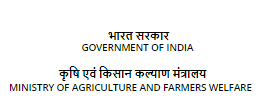Improved Jute Ribboner
Background:
Jute fibre is obtained through a bio-chemical process i.e., retting, which separates the fibres from the woody stem and gummy substances that bind them together. Traditional whole plant retting methods required a large volume of water and a bigger retting site. The conventional jute retting process and its extraction involve occupational health and safety hazards for the workers, as they have to stand inside the muddy and rotten water during the extraction process.:
On the other hand, both ribbon extraction technology and retting practices play a vital role in reducing the volume of water requirement and space for retting due to the reduction of the volume of biomass (up to 60 %) for retting. The jute growers are of the opinion that, if a ribboner capable of ribboning more quantity of jute plant each day is made available to them, they may adopt the same. It may be concluded that ribbon retting enhances the quality as well as reduction of health hazards.:
Technology Details:
The power-operated “Jute Ribboner” machine was developed for the extraction of jute ribbons from freshly harvested jute plants without breaking sticks. It is powered by a single phase 3 hp electric motor and can be operated by a 5 hp Diesel engine with slight modification. It consists of two sets of stick breaker-cum-ribbon pulling units placed one above the other. It has two input chutes so that two operators can work simultaneously at a time. Five to six jute plants can be fed in one set of breaker units, there by 10-12 plants can be extracted at a time by two units. The principle involves feeding jute plants by the butt end in between the upper breaking rollers, which crushes the stick about 5 cm, and then pulling off the ribbon by the lower rollers at high speed and placing the ribbon on the conveyor belt for delivery at front/ side of the machine. The sticks of the feeding plants were ejected intact from the upper tray of the machine. The ribbon extraction efficiency is more than 90 %.
Using Jute Ribboner there is saving of inner wood and time for ribbon extraction. Superior in terms of time for ribbon extraction as existing machines involves two-way operation for complete ribbon extraction. The fibre is obtained through retting of extracted ribbons (60% of biomass) instead of the whole plants. The advantage of ribbon retting are:
i) requires much less water,:
ii) retting time reduced to almost half of the traditional retting process,:
iii) root contents of fibre eliminated and:
iv) improves the fibre quality.:


